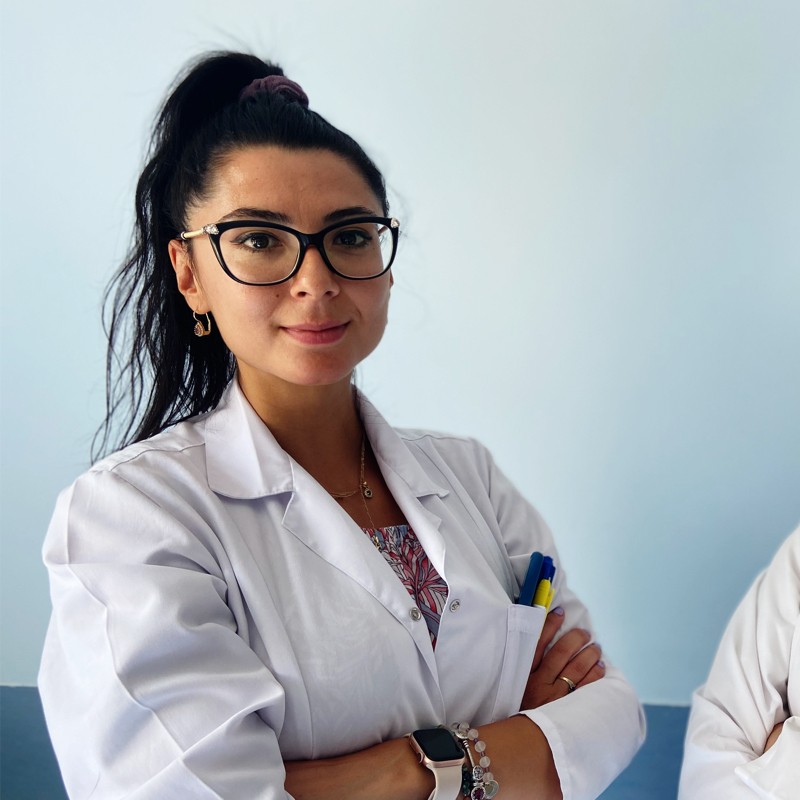Theme: Theme: Winds of Change and Innovation in Bacterial, Viral and Infectious Diseases
BACTERIAL DISEASES 2021
ME Conferences is gratified to welcome you to be a part of “4th Annual Congress on Bacterial, Viral and Infectious Diseases” Webinar going to be scheduled on November 30, 2021. This Bacterial diseases 2021 Webinar will focus on the theme “Winds of Change and Innovation in Bacterial, Viral and Infectious Diseases” that provides a global platform to discuss about the present and future challenges.
Bacterial diseases 2021 will provide an international platform for discussion and representing their views on present and future challenges in various infectious diseases, latest diagnosis methods and modern treatments. It gives an opportunity to the young to represent their thought regarding the forensic bacteriology, forensic virology and the techniques regarding this.
Why to Attend?
Bacteriology-2021 is an international platform for presenting research about Vaccine and Drug Research, Infectious Diseases Treatment and Preventive methods; Bacteriology 2021 provides an opportunity to share your knowledge.
The organizing committee is constructing the conference with high quality informatics to implement with the most advantageous and impactful education, ultimately aiming for an advancements in the field of Bacteriology and Infectious Diseases. Our events contribute with a onetime opportunity which on utilizing will build a brighter way for the young researchers and students in the respective field.
Target Audience:
- Bacteriologists
- Infectious Diseases Specialists
- Microbiologist
- Virologists
- Mycologists
- Immunologists
- Dermatologists
- Nephrologists
- Urologists
- Neurologists
- Parasitologists
- Epidemiologists
- Ophthalmologists
- Otolaryngologists
- Paediatricians
- Pathologists
- Haematologists
- Endocrinologists
- Dentists
- Orthopaedic Specialists
- Pharmacists
- Medical and Pharmaceutical Industries
- Health Care Professionals
- Research Associations and Institutions
- Students
TRACK 1: Bacteriology and Virology
Bacteriology is the branch of microbiology that deals with the morphology, ecology, molecular biology, genetics and biochemistry of bacteria as well as identification, classification, and characterization of bacterial species. Bacteriology is the study of bacteria and their interaction to medicine. Virology is that the scientific study of viruses – submicroscopic, parasitic organisms of genetic material contained in a very super molecule coat – and virus-like agents.
- Phage and Viruses
- Horizontal DNA transfer
- DNA Sequencing
TRACK 2: Clinical Pathology
Clinical pathology supports the diagnosis of disease using laboratory testing of blood and other bodily fluids like urine, hemolytic fluids, stool and tissues, and microscopic evaluation of individual cells or extracts using the tools of biochemistry, hematology, immunology, microbiology and molecular pathology. A Pathologist is referred as doctors of dead persons. A pathologist never uses the usual tools of ordinary physical examinations such as stethoscopes, glucometer or sphygmomanometers. He or she will not have direct contact with patients.]
- Anatomical and Forensic Pathology
- Chemical Pathology
- Experimental Pathology
TRACK 3: Biofilms and Biosensors
Biofilms are a collection of one or more types of microorganisms that can adhere and grow on many different surfaces. Biofilms form complex structures that are ubiquitous in natural habitat and can cause many infections like chronic infections which are difficult to treat. Microorganisms that form biofilms include bacteria, fungi and protists. While much is known about biofilms, but many questions remain about how biofilms mature and respond to internal and external stimuli and their strategy. Biosensors are used in the food industry and various other industries to measure alcohols and acids, carbohydrates, for example, during quality control processes and in medical industry by checking the blood glucose level. The devices may also be used to check fermentation during the production of beer, wine, yoghurt and soft drinks
- Biofilms, Motility and other Collective Behaviors
- Bioinformatics
- Novel Biosensor Targets
TRACK 4: Bacterial and Viral Infectious Diseases
Infectious diseases can be caused by: Bacteria, fungi and virus. These single celled organisms are responsible for illnesses such as strep throat, cholera, leprosy, tuberculosis and urinary tract infections. A bacterial infection is a proliferation of a harmful strain of bacteria on or inside the body which upon entry starts infecting the target cells. Bacteria can infect any area of the body like skin, urinary tract, blood, tissues etc. Pneumonia, folliculitis, meningitis, and food poisoning are just a few illnesses that may be caused by harmful bacteria. Bacterial skin infections are mostly caused by gram-positive strains of Staphylococcus and Streptococcus or other organisms.
- Clinical Studies of Adult Infectious Diseases, including Clinical Trials and Diseases caused by Bacteria and Viruses
- Transplant Infectious Diseases
- Allergy Immunology
- HIV Immunology
TRACK 5: Pediatric Pathology
Pediatric and perinatal pathology is associated with identification of disease in the fetus infant and child. It is age-specific rather than organ-specific and includes investigation of that organ unique to the fetus, which is the placenta. The spectrum of disease in this age range is very unique from that seen in adults and the interaction of congenital malformation and growth of the child interact to produce unique pathology. Degenerative disease is unusual in children, but cancers are relatively common, albeit the types of tumors are different to those in adults. Because of the smaller numbers of cases involved, perinatal and pediatric pathology departments are concentrated in very larger centers.
- Pediatric Infectious Diseases
- Parasite Immunology
- Infection and Immunity
TRACK 6: Microbial Molecular biology
Molecular biology is chiefly concerned with understanding the interactions between the various metabolisms of a cell, including the interrelationship of DNA, RNA and protein synthesis and learning how these interactions are regulated. Molecular biology is providing new insights into the nature of genes and proteins and the relationship between them. One of the most basic techniques of molecular biology is to study the function of protein is molecular cloning. In this technique, DNA coding for a specific protein of interest is cloned using polymerase chain reaction and/or various different restriction enzymes into a plasmid.
- Genome Dynamics, including Replication, Repair and Recombination
- Gene Expression and Regulation
- Signal Transduction
TRACK 7: Recombinant Protein Production and Enzymology
Recombinant protein is a manipulated form of protein, which is generated artificially in various different ways to produce large quantities of proteins, modify their gene sequences and produce useful commercial products. The development of recombinant protein is carried out in specialized cells known as vectors. Recombinant protein is the protein formed when any protein encoding gene is expressed in a heterologous host. Enzymology is the study of bacterial enzymes, their kinetics, structure, and their function, as well as their relationship to each other.
- Immunoassays & Immunofluorescence
- Immunofixation & Immunoadsorptio
- Flow cytometry& Mass cytometry
TRACK 8: Foodborne Infections and their Prevention
Bacterial infections are one of the major causes for foodborne illness. Nausea, fever, vomiting, chills, diarrhea, and abdominal pain are common symptoms of food poisoning. Raw meat, poultry, eggs, fish, and unpasteurized dairy products may harbor harmful bacteria that can cause illness. Unsanitary food preparation or eating under cooked or partially cooked food and handling can also encourage bacterial growth. Bacteria that cause food poisoning include:
- Campylobacter jejuni (C. jejuni)
- Clostridium botulinum (C. botulinum
- Escherichia coli (E. coli)
TRACK 9: Microbiology of Water
Bacteriological water testing is a method of collecting water samples and analyzing those samples to evaluating the numbers of bacteria present. This note presents the background to the testing of water samples to resolve whether disease-causing bacteria, in accurate faecal coliforms, are present in water. All bacteria need moisture, or water to grow and reproduce. Bacteria use the water to uptake food and to eliminate unwanted waste products.
- Bacterial indication of water pollution
- Protozoan predation in batch and continuous culture
- Methods in sediment microbiology
TRACK 10: Bacterial Nanotechnology
Pollutant removal from industrial effluents is a big challenging task for industries. These pollutants impose a great risk of damage to the environment. Nanotechnology can reduce the expenditure made by industries to mollify these pollutants through the production of eco-friendly nanomaterials. Nanomaterials are capturing attention due to their amplification in physical, chemical, and mechanical properties. Using microorganisms in the production of nanoparticles provides an even outstanding boost to green biotechnology as an emerging field of nanotechnology for feasible production and cost reduction
- Biosynthesis of nanomaterials
- Bacterial nanocellulose
- Microbial Nanotechnology for Bioremediation of Industrial Wastewater
TRACK 11: Antibacterial Drugs
Antibacterial medicine staterived from bacterium or molds or square measure synthesized de novo. Technically, “antibiotic” refers solely to antimicrobials derived from bacterium or molds however commonly used synonymously with “antibacterial drug.” Antibiotics generally move with alternative medicine, raising or lowering humor levels of alternative medicine by increasing or decreasing their metabolism or by varied alternative mechanisms. The foremost clinically necessary interactions involve medicine with an occasional therapeutic magnitude relation (i.e., cyanogenic levels square measure near to therapeutic levels). Also, alternative medicine will increase or decrease levels of antibiotics.
- Antimicrobial Pharmacokinetics and Pharmacodynamics
- New Antimicrobial Agents (In Vitro and In Vivo Studies Prior to the Start of Clinical Therapeutic Studies/Pre-Phase 2)
- Antiviral Agents (including HIV Drugs): Mechanisms of Action and Resistance
- Antibiotic Agents: Mechanisms of Action and Resistance
TRACK 12: Marine Microbiology and Marine Infectious Diseases
While marine animals and plants area unit most ordinarily used as sources of food, they additionally turn out a massive array of chemical compounds which will be developed into product with helpful medical and industrial uses. However, marine organisms, like bacterium, algae, and viruses, may be sources of human ill health. Though these microorganisms exist naturally within the ocean, human actions will cause ocean conditions that greatly increase their growth, harming the health of humans, marine species, and ecosystems. Marine microbiology is that the study of the microorganisms (bacteria, archaea, viruses and microbic eukaryotes) within the marine surroundings, as well as their diversity, ecology and biogeochemistry.
- Histology & Molecular Methods
- Aquatic Microorganisms
- Techniques for the study of Aquatic Microorganisms
TRACK 13: Soil Microbiology
Soil biological science could be a comparatively young science that started with our ability to sense soil microbic world victimization ever rising techniques in research and biology. Soil medical specialty or Soil biological science because it is usually known as is that the science that treats of the microorganisms in soils, their character, life-history and functions and their relationship to the fertility or crop-producing power of the soil. It’s one among the newer sciences that has appeared relatively recently as a right away outcome of the extreme scientific activity of the current "Golden Age of Scientific Discovery."
- Microorganisms and Mobilization of Nutrients for Plant Growth
- Management of Pathogens, Pests and Weeds through Microorganisms
- New methods in Bioconversion
- Microbiology of Agricultural Systems
TRACK 14: Diagnosis and Treatment of Infectious Diseases
Doctors diagnose infectious diseases employing a style of laboratory tests. Samples of blood, urine, stool, mucous secretion or different body fluids are examined and supply data utilized in the diagnostic method. In some cases, doctors determine infectious organisms by examining them underneath a magnifier. Several organisms board and on our bodies. They are unremarkably harmless or perhaps useful. However underneath bound conditions, some organisms could cause illness.
Some infectious diseases are often passed from person to person. Some are transmitted by insects or different animals. And you will get others by intense contaminated food or water or being exposed to organisms within the setting.
- Infection Prevention and Control: Healthcare-associated and Surgical Infections and Clinical Epidemiology
- Practical Tools for Bench Technologists
- Diagnostic Veterinary Microbiology
- Diagnostic Virology
TRACK 15: Industrially Important Microorganisms
Industrial biological science includes the employment of microorganisms to manufacture food or industrial product in giant quantities. Varied microorganisms area unit used at intervals industrial microbiology; these embody present organisms, laboratory selected mutants, or maybe genetically changed organisms (GMOs). Currently, the controversy within the use of genetically changed organisms (GMOs) in food sources is gaining each momentum, with additional and additional supporters on either side. However, the employment of microorganisms at associate industrial level is deeply stock-still into today’s society. The subsequent may be a transient summary of the assorted microorganisms that have industrial uses, and of the roles they play.
- Industrial Processes end products
- Bioprocess Engineering and Systems Biology
- Biosurfactants: Purification, Mass Production, Applications
- Biotechnologically relevant Enzymes and Proteins
TRACK 16: Microbial Immunology
Microbiology is that the study of a cellular and multi-celled microscopic organisms. Several microorganisms cause dangerous infectious diseases. Medicine is that the study of the system in an exceedingly diversity of organisms. The study of medicine semiconductor diode to the expansion of medical biology, that deals with identification, and mechanism of action of infectious agents. The disease-causing organisms area unit referred to as pathogens and their mode of assaultive the host and its effects on host is pathological process.
- Thymus and lymphocyte Immunobiology
- T-cell Immunology
- Systemic Lupus Erythematous
TRACK 17: Vaccines and Therapeutics
Vaccines stimulate the system to supply immune responses that defend against infection. Vaccines offer a secure, cost-efficient, and economical suggests that of preventing unhealthiness, disability, and death from infectious diseases. There’s over one kind of immunogenic, though every vaccine is meant to show the system a way to defend bound sorts of pathogens—and the intense diseases they cause. Kinds of vaccines include:
- Live-attenuated vaccines
- Inactivated vaccines
- Subunit, recombinant, polios, and conjugate vaccines
- Nucleic acid vaccines
TRACK 18: Global Spread of Viruses
As consecutive epidemics have swept back the globe, the scientific community has quickly learned from them concerning the emergence and transmission of communicable diseases. Epidemics typically occur once health systems square measure unprepared. Throughout Associate in nursing sudden epidemic, health authorities interact in control, worry drives action, and also the need to know the threat is greatest. As humanity recovers, policy-makers obtain scientific experience to enhance their "preparedness" to face future events. Global unfold of unwellness is exemplified by the unfold of infectious disease from Africa to solid ground, by the unfold of dandy fever through continental migration of mosquitos
- Global Health
- Global Health Practices and Impact
- Administering the Clinical/Public Health Microbiology Laboratory
Conference Highlights
- Bacteriology and Virology
- Clinical Pathology
- Biofilms and Biosensors
- Bacterial and Viral Infectious diseases
- Pediatric Pathology
- Microbial Molecular biology
- Recombinant Protein Production and Enzymology
- Foodborne Infections and their Prevention
- Microbiology of Water
- Bacterial Nanotechnology
- Antibacterial Drugs
- Marine Microbiology and Marine Infectious Diseases
- Soil Microbiology
- Diagnosis and Treatment of Infectious Diseases
- Industrially Important Microorganisms
- Microbial Immunology
- Vaccines and Therapeutics
- Global Spread of Viruses
To share your views and research, please click here to register for the Conference.
To Collaborate Scientific Professionals around the World
| Conference Date | December 01-01, 2021 | ||
| Sponsors & Exhibitors |
|
||
| Speaker Opportunity Closed | |||
| Poster Opportunity Closed | Click Here to View | ||
Useful Links
Special Issues
All accepted abstracts will be published in respective Our International Journals.
- Journal of Bacteriology & Parasitology
- Journal of Infectious Diseases & Therapy
- Journal of Medical Microbiology & Diagnosis
Abstracts will be provided with Digital Object Identifier by











